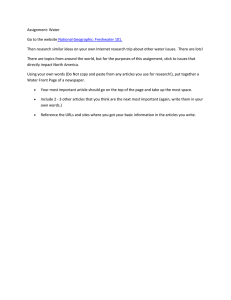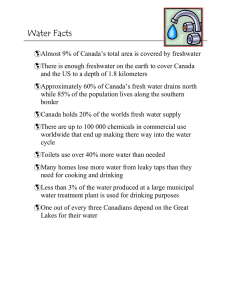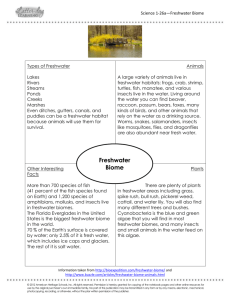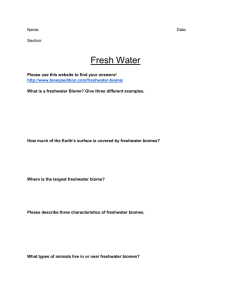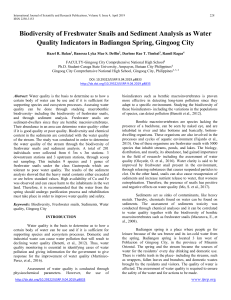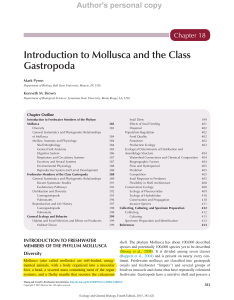Fresh Water and Wetland Ecosystems
advertisement
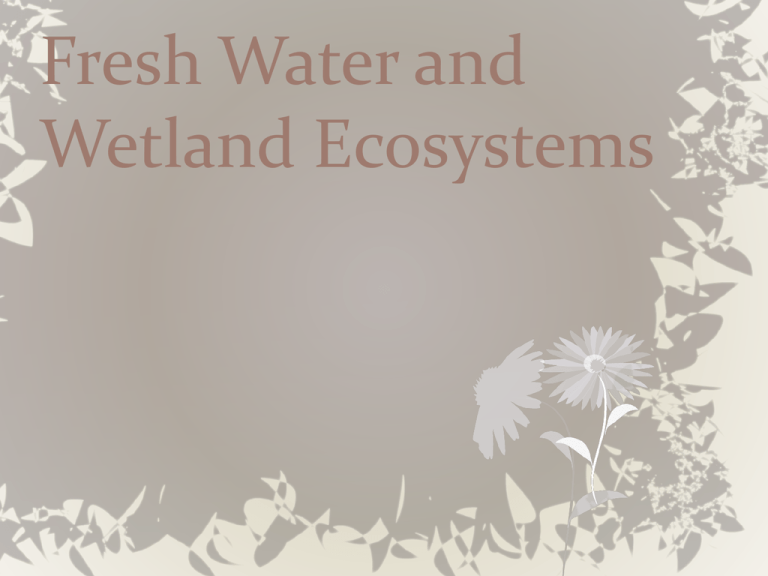
Fresh Water and Wetland Ecosystems Description The Freshwater Biome accounts for one fifth of the area of the Earth and provides half of the drinking water and one third of the water used for irrigation. The biome consists of inland lakes, streams, brooks, creeks, and rivers--as well as ditches, sloughs, gutters, puddles and canals. Freshwater wetlands include marshes, ponds, and swamps. PLANTS Pond and lake plants include shallow water plants such as cattails, floating plants such as lily pads, and underwater plants such as algae. Plankton are tiny plant organisms in the water that play a crucial role in the food chain. Without plankton, there would be few living organisms in the world because they are the main producers in many food chains and webs. PLANT Adaptations underwater leaves and stems are flexible to move with water currents some plants have air spaces in their stems to help hold the plant up in the water submerged plants may not have any roots, they take in water through their leaves Some plants have leaves that float atop the water, exposing themselves to the sunlight in floating plants the surface of the leaf is waxy to repel water Some plants produce seeds that can float Common Animal Adaptations Some animals like beavers and otters have oily hair that helps repel water. Many freshwater birds have webbed feet to aid in swimming or long legs to wade through the water. Insects like the pond skater have special legs so that they can move across the top of the water. Freshwater/Wetland Food web example Herbivores : Beavers, small fish, tadpoles, and snails. Carnivores: Otters , mink, ducks, geese, herons, and storks, frogs, toads, snakes, and larger fish like bass. Omnivores : Racoons, ducks, crayfish, dragonflies Decomposers in Fresh Water Habitats can include: Bacteria, fungi, snails, algae, and insect larvae.

